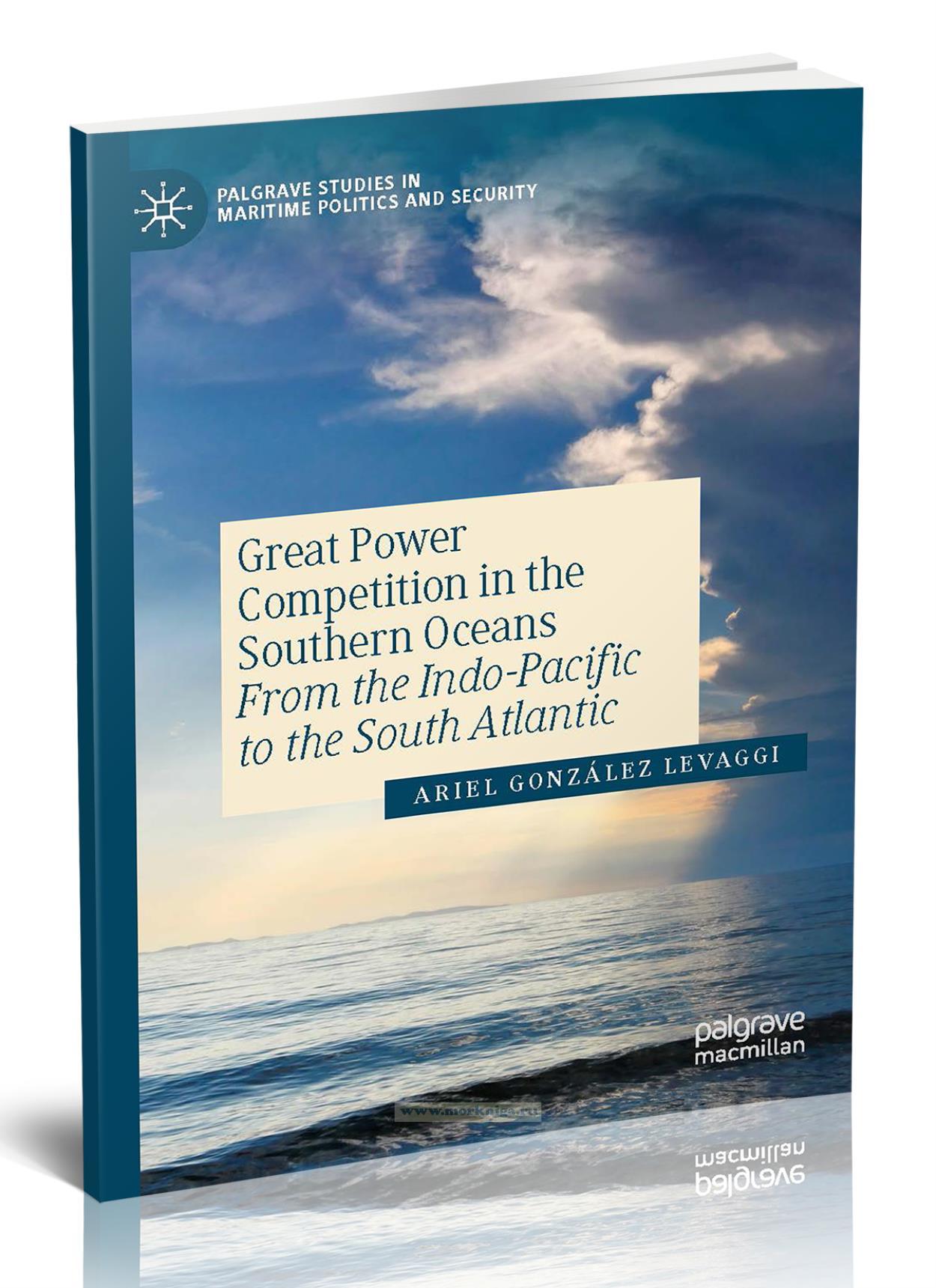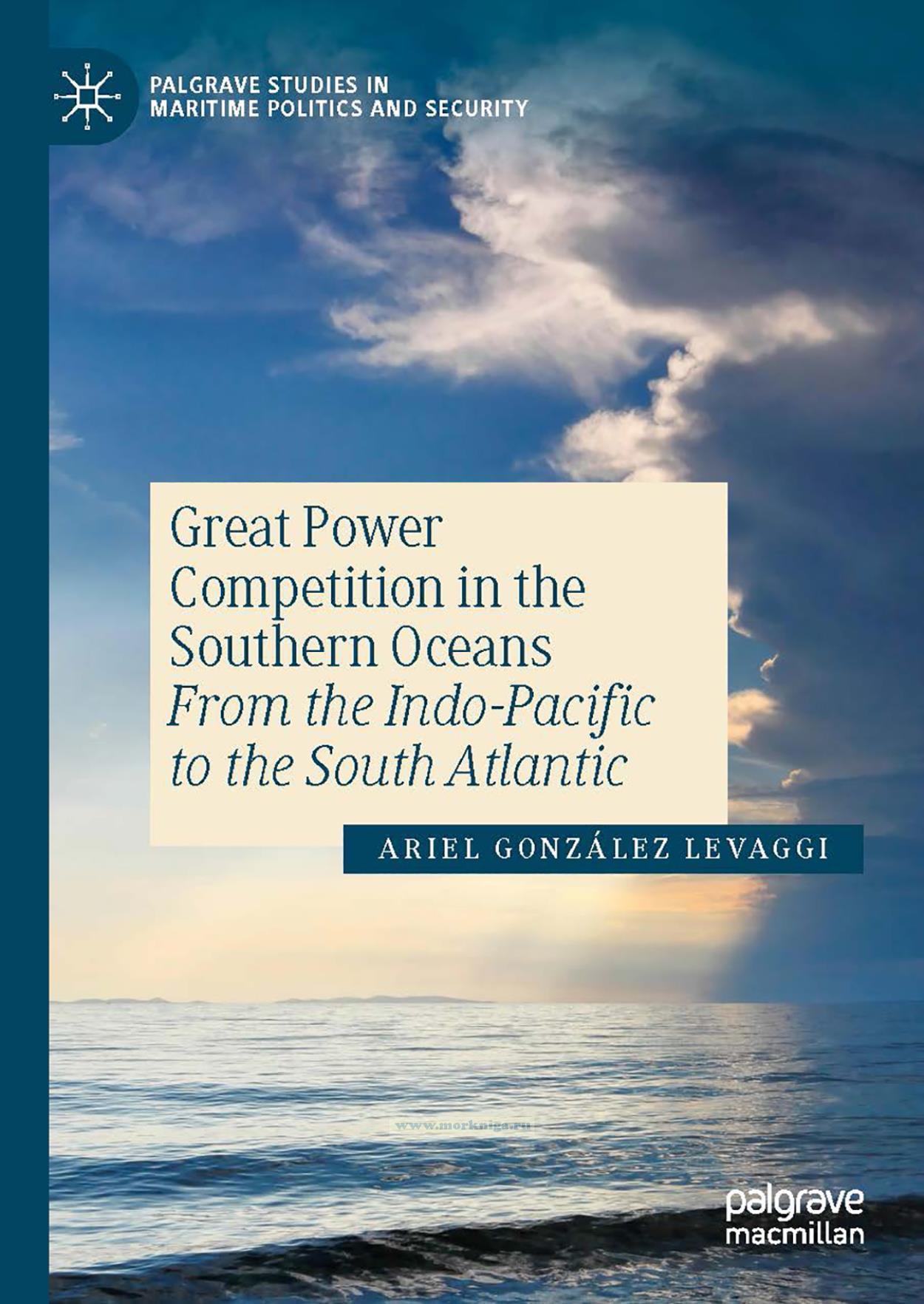Great Power Competition in the Southern Oceans/Соперничество великих держав в Южных океанах
Книга на английском языке.
Great power competition is the watermark of the current global scenario. In this regard, the maritime and naval dimension have a particular relevance on the struggle for regional and global hegemony. This book has the potential to engage with multiple audiences, since develops an analytic approach to understand naval great power competition in the maritime spaces of the Global South. It is set within a neoclassical realism approach, while engaging literature from international relations, international security, and studies on the Indo-Pacific and the South Atlantic security dynamics. The book offers a unique conceptual framework to understand how great powers select their maritime strategies, presents a series of regional and global maritime strategies by the United States, China, Russia and India, while assess their impact in the Southern Oceans, focusing in the Indo-Pacific realm and the South Atlantic.
Contents
1 Introduction
References
2 Between Threats and Capabilities: Maritime Strategies in the Era of Great Power Competition
2.1 Great Power Competition: The Place of the Seas
2.2 From the Grand Strategy...
2.3 ...To the Maritime Strategy
2.4 Threat Perception and Choice of a Maritime Strategy
2.5 Distant Maritime Projections: Effects on Regional Maritime Stability
References
Part I Maritime Strategies of Great Powers in the 21st Century
3 United States: Naval Hegemony Faces the Eurasian Challenge
3.1 The City on the Hill: Domestic and International Bases of U.S. Hegemony
3.2 From Liberal Hegemony to a New Grand Strategy of Dual Containment
3.2.1 Facing the Eurasian Axis: A New Grand Strategy of Dual Containment
3.3 The World According to the Pentagon
3.3.1 Debate and Trajectory Around the Defense Strategy
3.4 The Challenge of the Century: Maintaining Global Maritime Supremacy
3.4.1 Pillars of Global Maritime Supremacy
3.4.2 Naval Primacy in a Renewed Great-Power Competition
References
4 People’s Republic of China: The ‘Blue’ Dream of a Maritime Challenger
4.1 ‘Democratic Centralism’: The Chinese Communist Party in the Age of Globalization
4.2 Grand Strategy in the Xi Jinping Era: From Pacific Development to the Chinese Dream of the Great Rejuvenation
4.2.1 Moving Away from the Defense: A Changing Orientation
4.2.2 Concentric Objectives Around Territorial Integrity
4.2.3 Centralized Decision-Making, Multiple Instruments Available
4.3 The People’s Liberation Army and Active Defense: Defensive Strategy, Offensive Tactics
4.3.1 The Party, the Red Army, and the Organization of the Military Factor
4.3.2 Armed Forces Faces Regional and Rising Global Challenges
4.4 The ‘Blue’ Dream: Developing Capabilities for a ‘Distant Water’ Navy
References
5 Russia’s Maritime Strategy: Between Naval Modernization and Power Projection
5.1 Putin’s Grand Strategy in New Era of Uncertainty
5.1.1 From Pragmatism to Offensiveness as an Organizing Principle
5.1.2 The Tripod: Global Status, Regional Primacy, and Deterring NATO
5.1.3 Instruments: Diplomacy, Soft Power, and (a Lot of) Coercion
5.2 Military Strategy: Hybrid Conflicts and Regional Priorities
5.3 Russian Navy: Between the Coast and the Global Seas
References
6 Republic of India: A Democratic Power with Maritime Aspirations
6.1 New Delhi in the World: International Strategy in a Complex Environment
6.1.1 Continentalism and Defensive Orientation
6.1.2 India’s Goals: Sovereignty, Stability, and Development
6.1.3 Indian Arrows: Between Attraction and Nuclear Power
6.1.4 The Challenge of a Rising Star: Between Minimalism and Maximalism
6.2 Indian Military Strategy: Rivalry with Pakistan and the China’s Challenge
6.3 India’s Maritime Strategy: Regional Priorities, Global Issues
References
Part II Naval Competition in the Oceans of the Global South
7 Indo-Pacific: Clash of the Titans
7.1 A Multipolar Scenario: A Crossroads of Narratives and Geopolitical Stakes
7.1.1 A Complex Chessboard: Geopolitical Ambitions and Projects
7.2 Critical Instability: From Taiwan to the Gulf of Aden
7.2.1 Global Level: Towards the Thucydides Trap
7.2.2 Regional Level: Regional Rivalries and Maritime Tensions
7.2.3 Transnational Level: Bottlenecks and the Malacca Dilemma
7.3 New Wine in Old Wineskins: Institutions, Alliances, and Regional Challenges
7.3.1 The Geopolitical Containment Game: Between QUAD and AUKUS
7.3.2 The Geo-economic Dynamics Game: From BRI to RCEP
7.3.3 Convergences and Divergences in Maritime Cooperation
References
8 The South Atlantic and the Global Strategic Competition
8.1 The Peaceful Ocean? Trends in the South Atlantic Scenario
8.1.1 Extra-Regional Great Powers in the South Atlantic
8.2 Sustained Projection: United States
8.3 Increasing Projection: China
8.4 Selective Projection: Russian Federation
8.5 Limited Projection: India
8.6 The South Atlantic vis-a-vis the Eurasian Powers
References
9 Southern Oceans and Great Power Competition: A Call for Strategic Autonomy
References
Bibliography
Index

